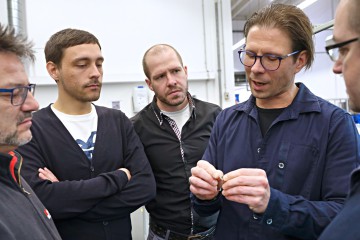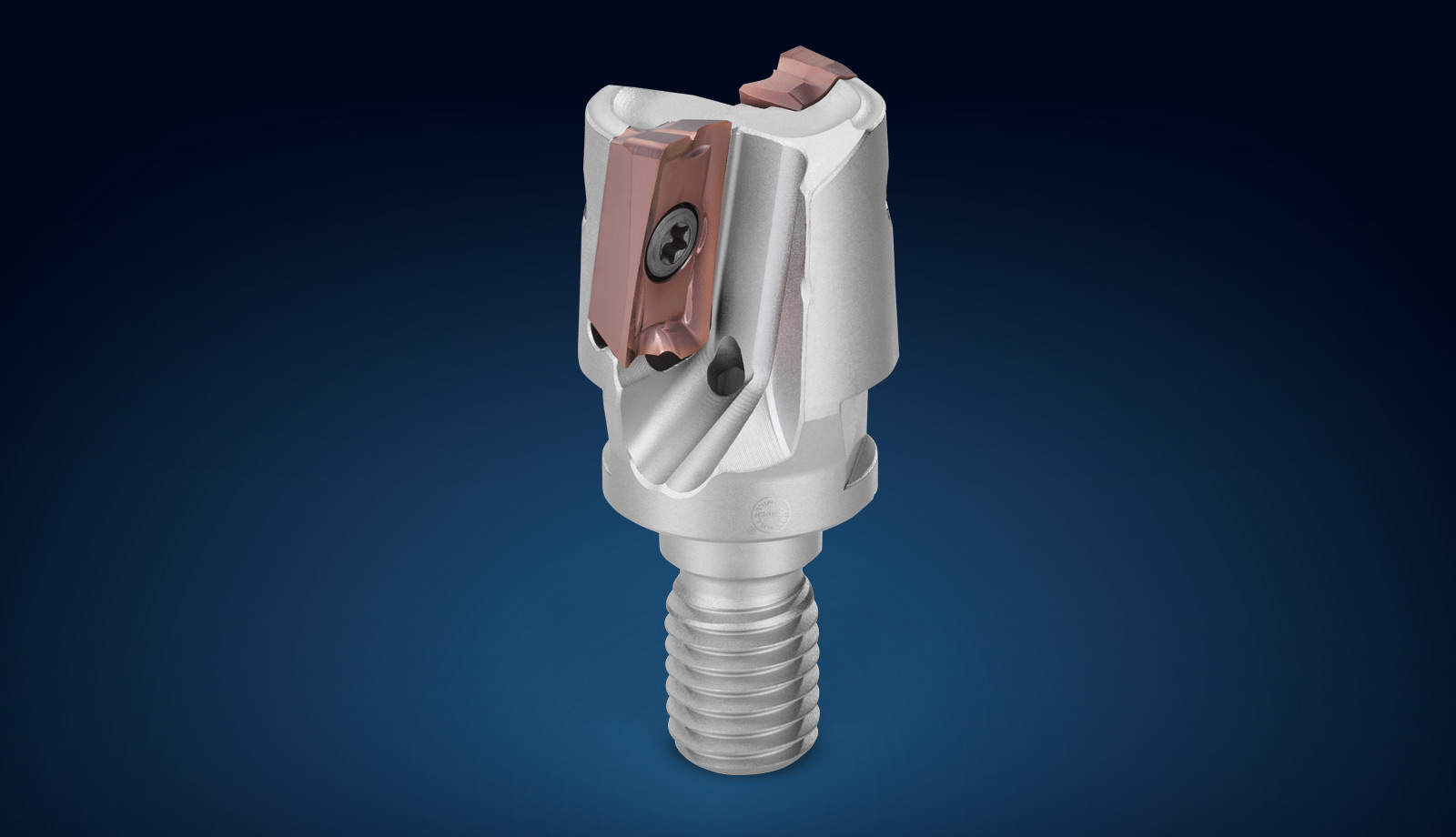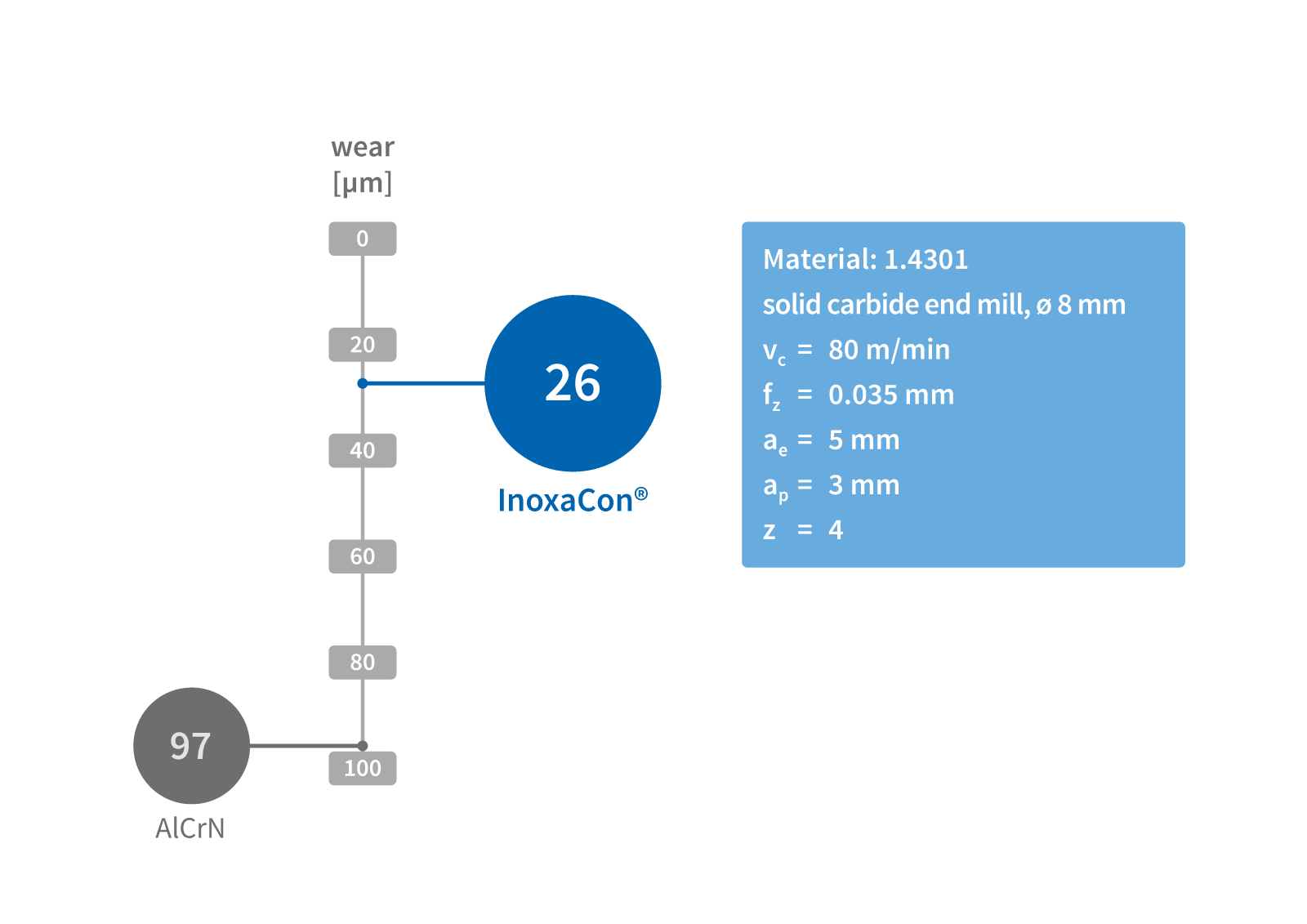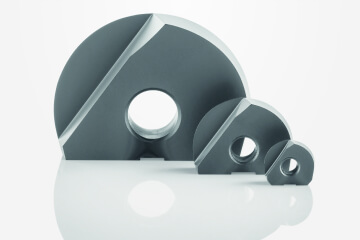
Best choice for stainless steels

InoxaCon® for reliable machining processes
From machines, to stair railings, to cutlery, to automobiles, ships and aircrafts – stainless steel can be found in almost all areas of everyday life, i.e. wherever the material is exposed to environmental influences and must not rust. As the name implies, InoxaCon®, the hard, smooth, tough HiPIMS coating material, offers ideal conditions for the reliable cutting of stainless steel.
Stainless steels are characterized by a high degree of resistance to corrosion and acid. They are very tough and have a low thermal conductivity. “This is not a good combination for machining, because drilling, milling and turning generate high oxidation on the cutting edge which can damage the tool,” says Dr. Stephan Bolz of PVD Process Development at CemeCon. “Thanks to its high temperature stability up to 1,100°C, InoxaCon® optimally protects the tool from heat during the machining process, and the heat is conducted into the swarf.”

“Due to the high frictional heat, built-up edges can also occur on the tool. The slightly 'melted' chip bakes, so to speak, onto the face. If another chip then comes along, there is a risk that it will rip these welded-on chips off, taking parts of the coating and substrate with it. The result: The tool wears out,”says Stephan Bolz, explaining the problem of cold welds. InoxaCon® has crucial advantages here: The HiPIMS coating material is very smooth, which reduces heat, and it has a low affinity for stainless steels. This dependably prevents built-up edges and ensures process reliability.
Thanks to MIRRORED PROCESSES AND PRODUCTION in the CemeCon coating centers THROUGHOUT THE WORLD, tool manufacturers everywhere receive the SAME COATING SOLUTION in the SAME QUALITY as in Germany.
CemeCon offers two different variants of coating material: with a coating thickness of 3 µm for shank tools and cutting inserts and 1.5 µm but only for shank tools. “And another little tip: InoxaCon® also works very well when cutting titanium and nickel-based alloys,” adds Stephan Bolz.
Download this FACTS Story as PDF Overview of all FACTS magazines (PDF)
